During the Spring Festival, the 40-year-old house in the countryside has been rejuvenated! There is a kind of Chinese New Year called Fengxian.
No.418, Suilun, Changdi Village, Zhuanghang Town, Fengxian District. The owner of this old house is Feng Kaimin.
In the past 40 years, this old rural house has experienced the same vicissitudes as other old rural houses: mottled walls, broken roof tiles and damaged facilities. However, just as the Spring Festival comes in 2024, it has undergone great changes-the unified style of white walls and gray tiles, the scattered layout of the front hall, the central garden and the backyard, with simple and generous doors and windows … attracting many relatives and friends to visit.
For Feng Kaimin, it is his long-cherished dream that a whole family can spend the Spring Festival in the "new house" and share a happy reunion.
What will the old rural house look like?
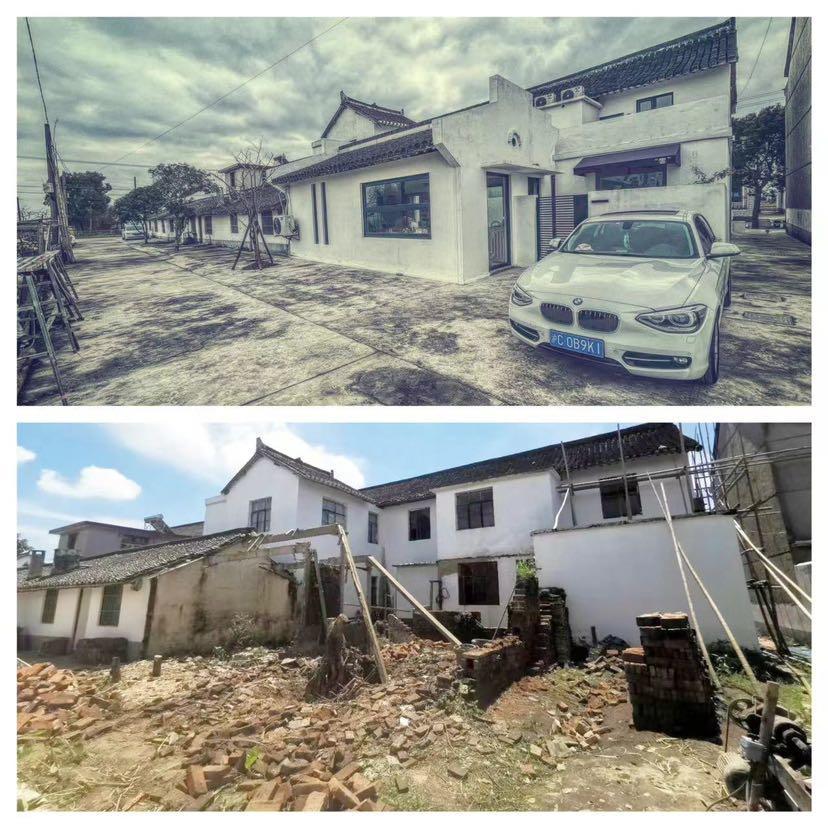
At present, there are 175 villages and about 100,000 farmers in Fengxian, and most of their old rural houses were also built in the 1980s. Prior to this, with the increasingly prominent "old, broken and old", more and more young villagers left the countryside and entered the urban area, living a "one city and one township" life with their parents. Nowadays, with the deepening of rural revitalization, the rural living environment is becoming more and more beautiful and comfortable. A large number of young villagers are eager to "go home" and want to live with their relatives and return to their childhood. Feng Kaimin is one of them.
According to the Measures for the Administration of Rural Villagers’ Housing Construction in Fengxian District, in recent years, in fact, there are many villagers who have built, rebuilt, expanded or renovated their old houses in rural areas, and many new problems have also arisen. For example, the house is very new, but it doesn’t conform to the aesthetics of young people. The house is beautiful, but the interior design doesn’t highlight comfort more. For another example, the transformation is quite conspicuous, and it is out of place with other old houses, or it is out of harmony with the surrounding style, and the villagers are not willing to visit …
There are also clever villagers who "smell" the opportunity of "homestead reform" and "wait" for the government to act as a "intermediary" to transfer the right to use the homestead and let the third party rejuvenate the old house. But such a good thing can’t happen to every village, and it can’t be applied to every family. The vast majority of villagers still have to improve their living environment by themselves and work together to build beautiful countryside. However, it is a headache to create what kind of house can not only be in harmony with the present rural beauty, but also be compatible with the homesickness of the older generation and the living habits of the new generation.
Be a crab eater once.
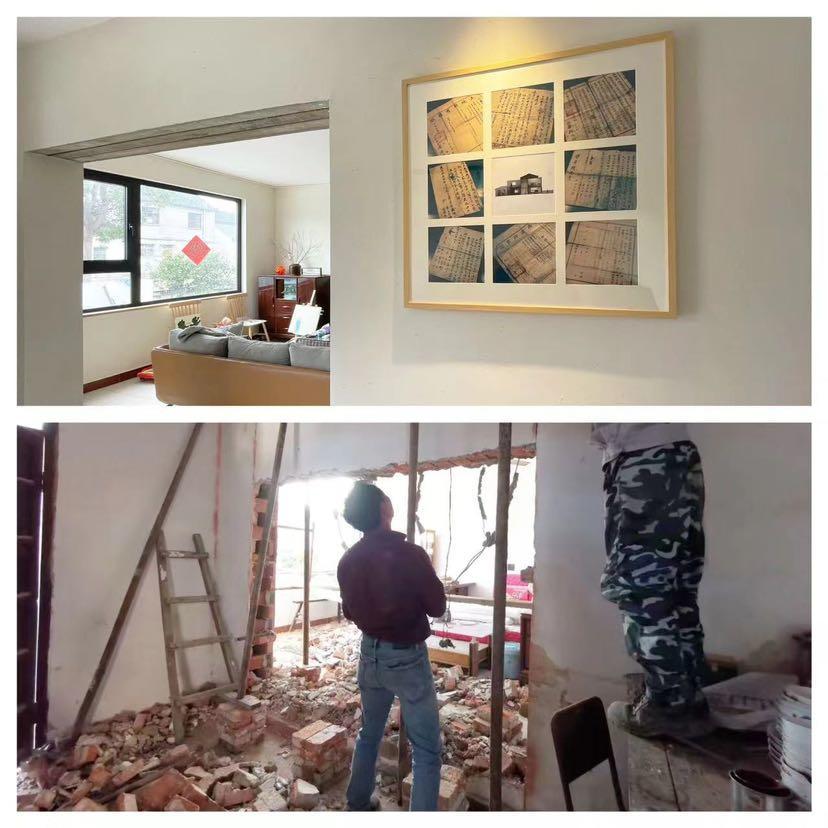
In 2020, introduced by a friend, Feng Kaimin walked into the Fennel Studio in Fengxian and got to know Tang Yue and Liao Chen, two old house renovation designers. Among them, the former, a native of Fengxian, is eager to use rich experience in space design to reshape the old house in the hearts of the villagers; The latter is an international prize winner of architectural design in the field of old house renovation.
Their arrival brought another idea for Feng Kaimin to transform his old house, that is, while retaining the original appearance of the old house, remodeling its pattern at a price acceptable to the villagers, so that it can meet the living needs of four generations. Feng Kaimin said that this was an attempt he had never thought of before.
In fact, the transformation of the old house will encounter many intangible and tangible restrictions. On the one hand, the local government hopes that the style of houses in rural areas can be unified, so as to avoid the visual pollution caused by too diverse house styles, thus creating the overall aesthetic feeling of the countryside. On the other hand, to transform the 40-year-old old house is equivalent to a large-scale "operation" in the "shell", otherwise it will be difficult to break its original state and give it new life functions. However, it takes a lot of trouble, and the villagers can’t help worrying, and it costs no money.
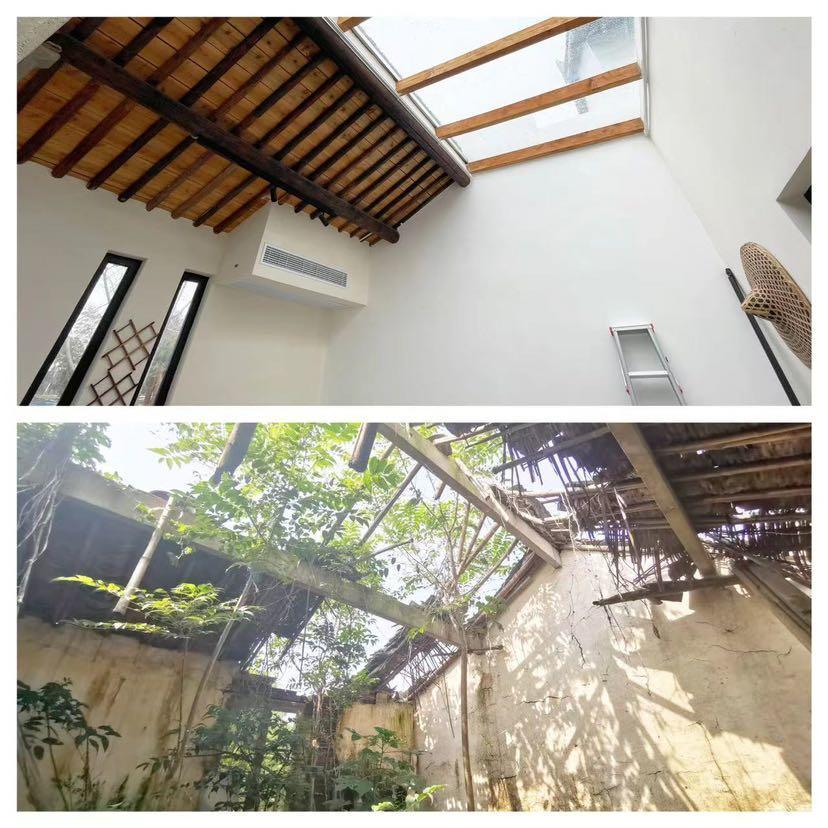
For the renovation of the old house, the family also has their own opinions. Feng Kaimin wants to hand over the old house to professionals to find his childhood home within his ability. What father Feng Jianqiang and mother Sun Huijuan originally thought was that, like other villagers in the village, they would whitewash the walls, repair the roof, and then transform the bathroom so that the old couple could live. Perhaps out of the desire for reunion, the year before last, the family finally reached an agreement and took out a budget of 600,000 yuan to be a "crab eater".
And Tang Yue and Liao Chen’s affection for the rural old house was deeply recognized by Feng Kaimin’s family. "When Tang Yue entered the door, he told me that this wooden door must be left, because this is the iconic door of the old house; There is also the ground between the guest rooms, which is the ground of water mill. These are the marks of the old rural houses. " Feng Kaimin said that it is worthwhile to give the house to a designer who loves the countryside and has special feelings for the old house.
Traditional and modern, old houses welcome new students.
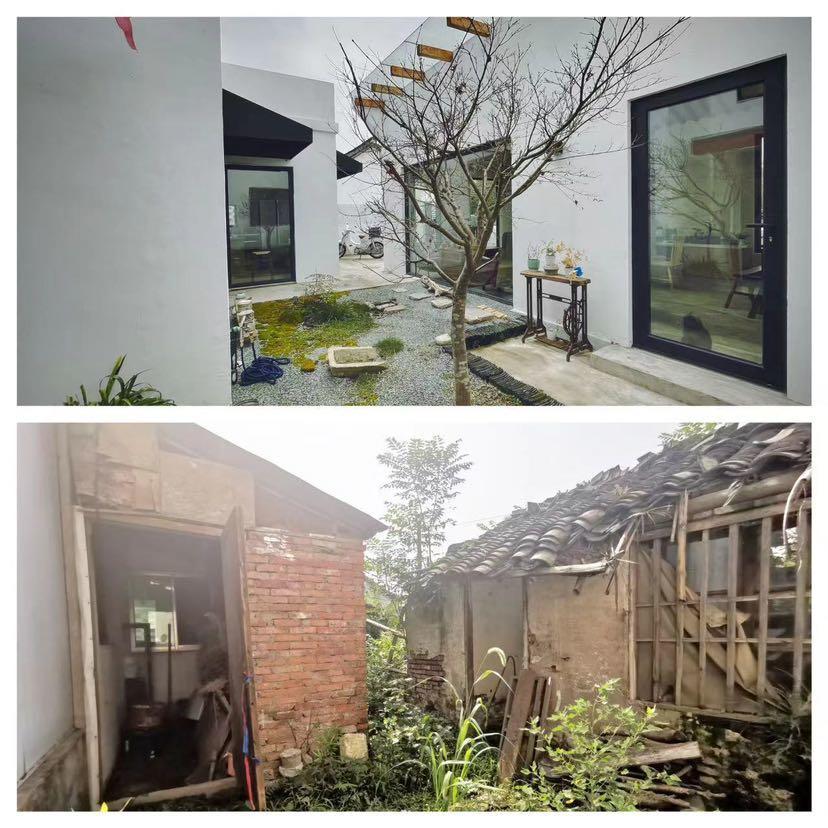
The process of transformation is a long and prone to friction.
Tang Yue said that Feng’s old house consists of two buildings. The former building is a traditional two-story structure and is the main area of daily life. The back house, formerly a thatched cottage, is in a collapsed state. There is also a small open space between the two buildings, all of which add up to 288 square meters. At that time, the first design plan was to open the living room, kitchen, open space and back room of the front building and divide it into three areas: the front building retains the characteristics of the old house and does not break the existing living habits of the elderly; The middle open space is endowed with the beauty of garden by Chinese landscape design, which makes the old house unique; The back room is mainly designed with floor-to-ceiling windows to create a leisure space for young people. On the second floor, according to the needs of young people, the master bedroom, second bedroom, study room, leisure room, etc. are designed, and the style is beautiful as a homestay. During this period, the old man also had many doubts, such as "Will the door be opened too much?" "The wall is torn down and the glass is replaced, and the house is still not firm." "The functions are so scattered that it is inconvenient to eat, go to the toilet and sleep." … After repeated communication and explanation, this year, the old house finally ushered in a complete new life.
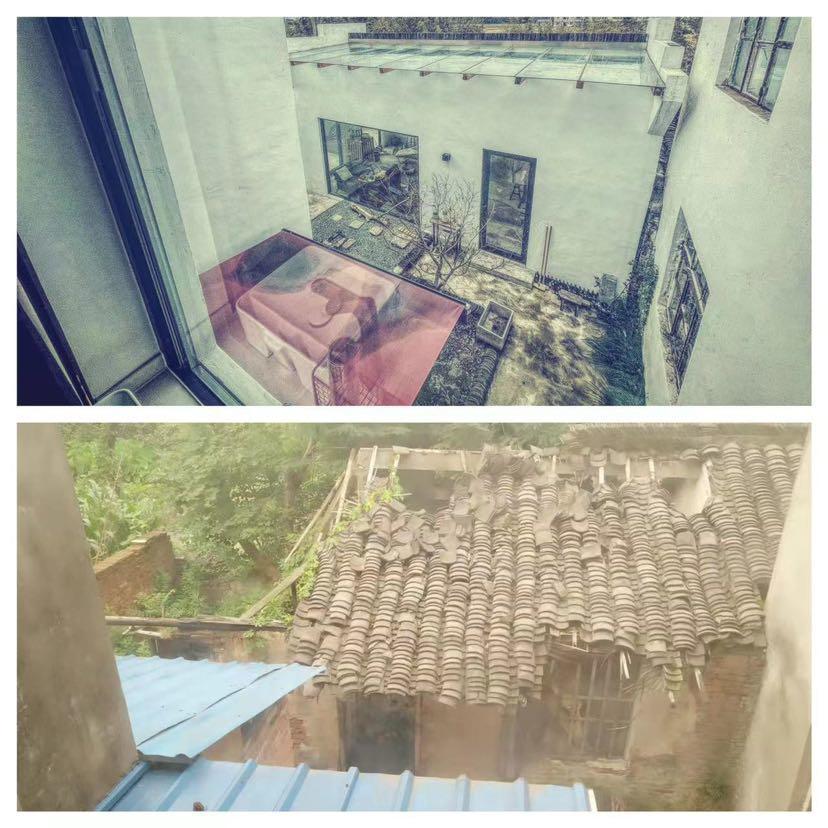
"Now these three areas are interconnected and independent, both traditional and modern, suitable for the elderly and meet the needs of young people." Feng Kaimin said that when he was a child, he could walk in the dark in his old house. He was familiar with where the switch was and where the stairs were. Now, he can also walk in the dark in my old house, and the memory of my old house is still completely preserved in this old house. "Including guests from home, relatives and neighbors, it is the same as the countryside when I was a child, without slippers. I think this is my old house. Although it has become more comfortable and more in line with the living needs of our young people, it is still the home I want in my heart. Now, he, his wife and daughter have all moved their lives to the countryside, because for them, today’s old house is no different from the living facilities enjoyed by urban residents.
How does the old house create its own poems and distant places?
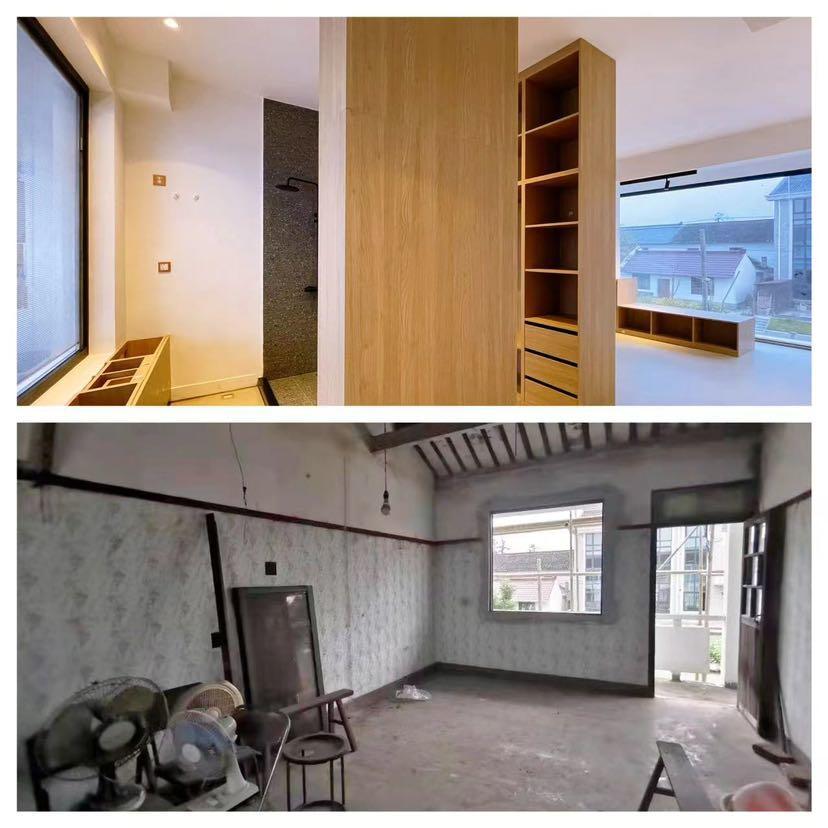
This year’s Spring Festival, Feng’s old house ushered in an unprecedented excitement. Father Feng Jianqiang loves watching TV, so he sits in the living room and watches TV. Sun Huijuan, the mother, has a good popularity. Old sisters and relatives from the homestead come to visit and gather in the kitchen to make wonton and fry cakes, talking and laughing to celebrate the arrival of the New Year. Feng Kaimin, on the other hand, enjoys reading, writing, singing and playing guitar with his friends in the city in the back room.
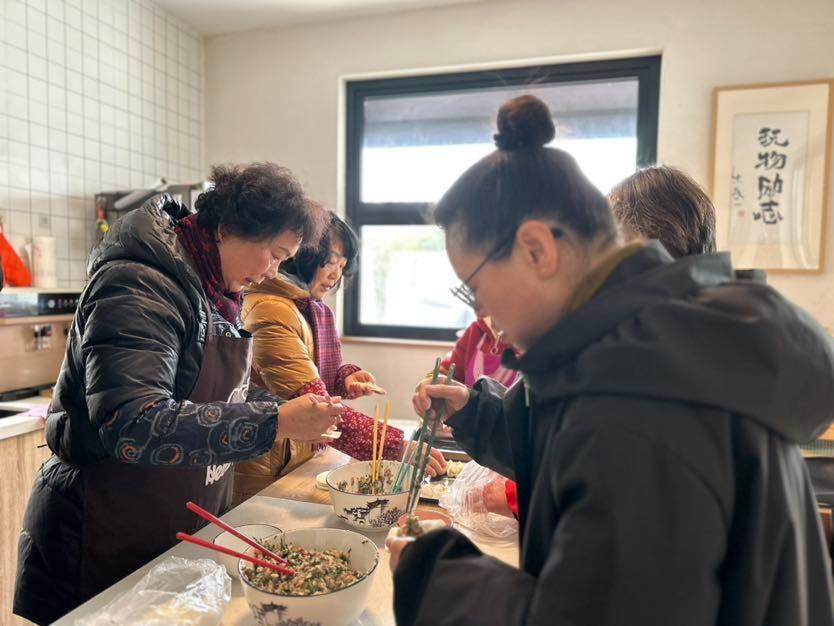
As soon as the cake in the front room is baked, the young people in the back room can also taste it. As soon as the Spring Festival couplets in the back room were finished, they ran to the front room to add joy to the old people. Feng Jianqiang said: "Through the transformation, the popularity of the old house is getting more and more, which is really good. The old man doesn’t want to see anything, but he wants to be lively. " Sun Huijuan also said: "My son and daughter-in-law have come back to live, and neighbors often come to get together at home, feeling that the harmonious atmosphere in this countryside is getting stronger and stronger."
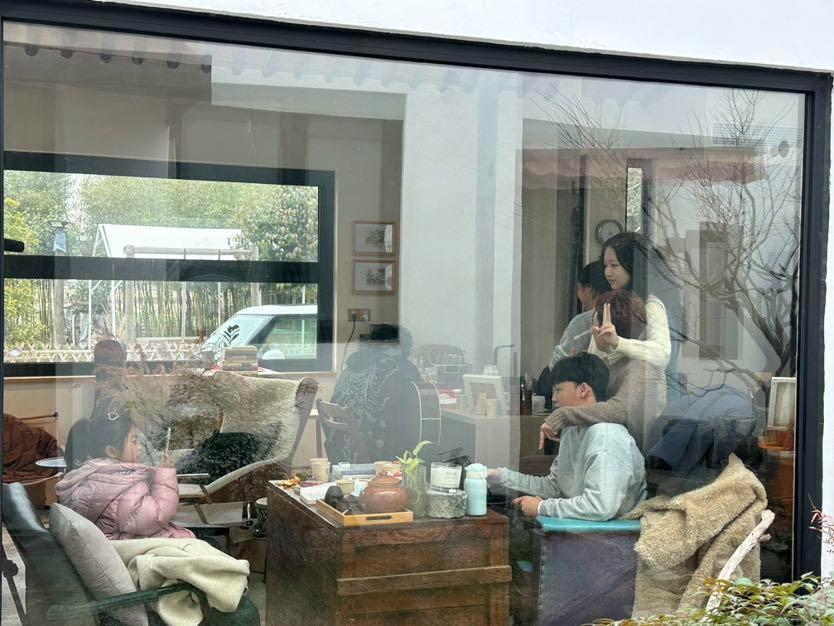
Beautiful countryside, in Feng Kaimin’s view, we must first make the old houses beautiful. Through the renovation of the old house, he wants to tell his peers that the renovation does not need to be expensive to realize his wishes. He also often shares his back house, hoping that more and more young villagers will walk into Feng’s old house and learn the story of the rejuvenation of the old house, so as to attract more and more villagers to join this spontaneous transformation and create their own poems and distant places.
At present, with the help of Fennel Studio, many villagers have followed suit in Zhuanghang Town, Zhelin Town, Xidu Street and Situan Town. These villagers said that, just like the name of Fennel Studio, "Fennel" has the same pronunciation as "going back to hometown". "While enjoying the scenery in the south of the Yangtze River and the charm of the water town, you can enjoy the neighborhood and family. This is the annual taste of Fengxian."
Original title: "In the Spring Festival, the 40-year-old house in the countryside has been rejuvenated! There is a Chinese New Year called Fengxian.
Read the original text